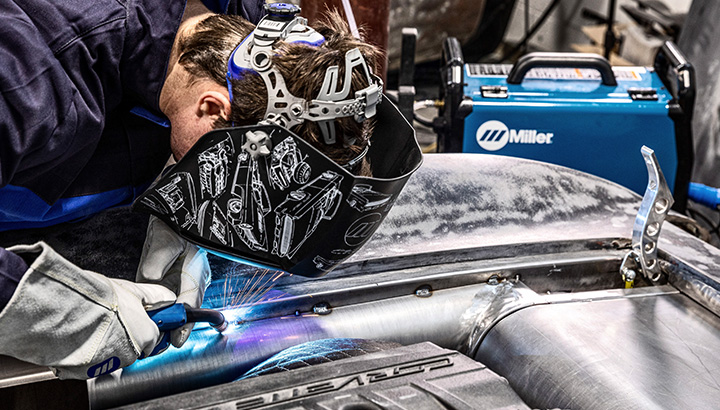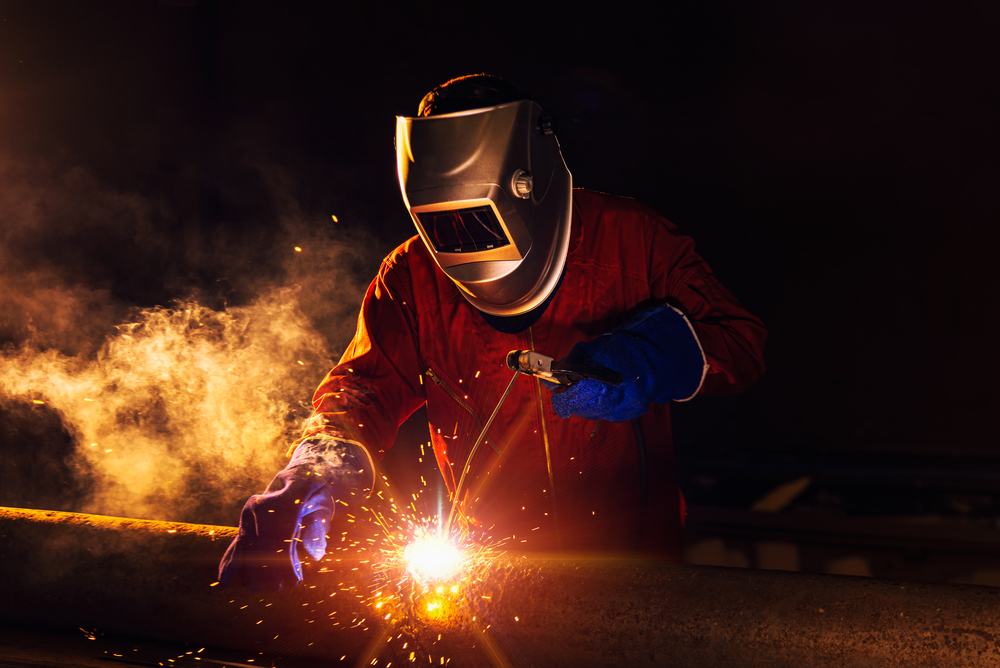Early defect indicators and what Belgrade can do about them
Wiki Article
All About Welding: Key Insights Into Techniques and Best Practices for Success
Welding encompasses a range of techniques, each matched for certain materials and applications. Understanding these approaches, such as GMAW, SMAW, and TIG, is crucial for achieving excellent outcomes. Additionally, the best equipment and security techniques can not be forgotten. As prep work and fixing play essential roles in the welding process, mastering these aspects can greatly boost the top quality of the final product. What are the essential variables that ensure a successful weld?Recognizing Various Welding Methods
Welding strategies incorporate a variety of techniques, each matched to certain applications and products. Among the most usual methods are Gas Steel Arc Welding (GMAW), Protected Metal Arc Welding (SMAW), and Tungsten Inert Gas Welding (TIG) GMAW, also called MIG welding, is preferred for its rate and flexibility, making it optimal for slim products. SMAW, or stick welding, is preferred for its simpleness and efficiency in outdoor atmospheres, specifically with thicker steels. TIG welding provides accuracy and control, making it appropriate for intricate job and non-ferrous metals (Montana Mobile Welding and Repair Belgrade). Each technique has its unique benefits and considerations, permitting welders to pick the very best approach based on the project's requirements, product type, and preferred outcomes. Comprehending these methods is essential for successful weldingEssential Welding Tools and Tools
While various welding techniques call for details abilities, the ideal equipment and devices are similarly important for attaining quality outcomes. Necessary welding equipment consists of welding equipments, which differ relying on the technique-- such as MIG, TIG, or stick welding. Safety gear, consisting of headgears, aprons, and gloves, guarantees safety and security and comfort throughout the process. On top of that, clamps and fixtures aid safeguard materials in position, guaranteeing precision in welds. Consumables like welding rods, cord, and protecting gas are likewise crucial components that affect the high quality of the weld. Moreover, tools such as grinders and cutters facilitate surface prep work and post-weld finishing, adding to an expert result. Purchasing top quality devices eventually boosts the performance and effectiveness of welding projects.Security Practices in Welding
Appropriate security methods are essential in the welding market to safeguard workers from potential risks. Welders have to put on suitable individual protective equipment (PPE), including helmets with correct shading, handwear covers, and flame-resistant garments. Appropriate air flow is essential to lower direct exposure to damaging fumes and gases produced during the welding process. In addition, employees ought to be educated in the correct handling of welding tools to avoid mishaps. Fire precaution, such as keeping combustible products far from the welding location and having fire extinguishers easily offered, are necessary. Routine assessments of tools and workspaces can aid recognize prospective risks prior to they lead to crashes. By adhering to these safety and security techniques, welders can create a much safer working environment and decrease dangers connected with their trade.Preparing Products for Welding
Preparing materials for welding is an important step that substantially affects the quality and honesty of the end product (Montana Mobile Welding and Repair Belgrade). Correct prep work includes cleansing the surfaces to remove pollutants such as oil, rust, and dirt, which can compromise the weld. Strategies such as grinding, sanding, or utilizing solvents are typically used to accomplish a clean surface area. Additionally, ensuring that the products mesh comfortably is necessary; spaces can lead to weak welds. It's also essential to take into account the placement and positioning of the components, as this will impact the ease of welding and the final result. Choosing the ideal filler product and making certain compatibility with the base steels is crucial for achieving strong, durable welds.Tips for Getting High-Quality Welds
Attaining high-grade welds requires focus to information and adherence to finest methods throughout the welding process. Proper joint prep work is necessary, making certain surfaces are cost-free and clean from contaminants. Selecting the ideal filler material and welding technique based upon the base metals is important for excellent bonding. Preserving regular travel speed and angle while welding can protect against flaws and promote uniformity. Additionally, controlling warmth input is essential; extreme warmth can bring about warping and weakened joints. If needed, routinely checking the welds throughout the process enables for instant changes. Finally, employing suitable post-weld treatments, such as cleansing and tension alleviation, can improve the toughness and stability of the weld, eventually making sure a successful outcome.Troubleshooting Usual Welding Issues
Welding typically presents obstacles that can influence the quality and stability of the final product. Common issues such as porosity, irregular weld beads, and overheating can develop, each requiring specific repairing methods. Recognizing these problems is important for welders to enhance their skills and attain perfect results.Porosity Troubles Described
Porosity can usually be overlooked, it remains a crucial issue in welding that can compromise the stability of an ended up item. Porosity refers to the existence of little gas pockets within the weld grain, which can lead and deteriorate the joint to premature failing. This issue commonly emerges from impurities, dampness, or incorrect shielding gas protection during the welding process. To minimize porosity, welders should validate that the base products are dry and tidy, utilize suitable securing gases, and keep regular welding parameters. On a regular basis evaluating the equipment and atmosphere can likewise help identify prospective concerns prior to they manifest in the weld. Addressing porosity successfully is crucial for achieving solid, resilient welds that fulfill quality standards.
Inconsistent Weld Beads
Inconsistent weld beads can considerably influence the high quality and strength of a finished item. Numerous elements add to this issue, consisting of inappropriate travel rate, inaccurate amperage setups, and irregular electrode angles. When the welder moves also swiftly, a bead may appear narrow and lack infiltration, while relocating too slowly can trigger extreme buildup. Furthermore, making use of the wrong amperage can result in either undercutting more info or excessive spatter, both of which compromise weld stability. The welder's strategy, such as inconsistent torch movement, can additionally result in unequal bead appearance. To alleviate these troubles, welders need to concentrate on keeping constant, regulated motions and making sure correct devices setups to achieve harmony in their welds. Consistency is vital to attaining reputable and strong welds.Overheating and Bending Issues
Too much heat during the welding process can lead to considerable getting too hot and deforming issues, influencing the structural honesty of the work surface. These issues commonly show up as distortion, which can compromise alignment and fit-up, making further setting up testing. Elements contributing to overheating include the selection of welding specifications, such as voltage and take a trip rate, along with the kind of material being welded. To reduce these issues, welders must preserve consistent travel speed and appropriate warm input while checking the work surface temperature. In addition, preheating or post-weld warmth treatment can aid relieve tensions triggered by fast air conditioning - Fabrication. Regular inspection and adherence to ideal techniques are important in stopping overheating and making sure the durability and dependability of welded structuresOften Asked Inquiries
What Are the Job Opportunities in the Welding Sector?
The welding industry provides varied career possibilities, consisting of placements as welders, engineers, instructors, and assessors. Professionals can work in manufacturing, building and construction, aerospace, and automotive markets, benefiting from strong need and affordable incomes in various duties.Just How Can I Improve My Welding Speed Without Sacrificing Top Quality?
To enhance welding speed without compromising high quality, one should exercise efficient methods, preserve tools, optimize settings, and enhance hand-eye sychronisation. Regular training and seeking feedback can also considerably add to accomplishing faster, premium welds.What Certifications Are Offered for Welders?
Various qualifications exist for welders, including those from the American Welding Culture (AWS), the National Center for Building And Construction Education And Learning and Research Study (NCCER), and different industry-specific organizations. These qualifications boost employability and show ability efficiency.How Does Welding Influence the Features of Metals?
Welding influences the residential or commercial properties of metals by altering their microstructure, which can lead to modifications in ductility, toughness, and firmness. Warm input and air conditioning rates during the process significantly affect these product characteristics.Can I Weld Dissimilar Metals Together?

Report this wiki page